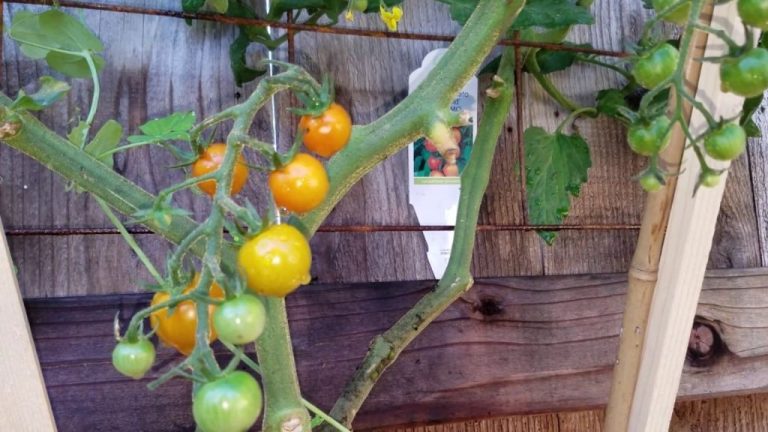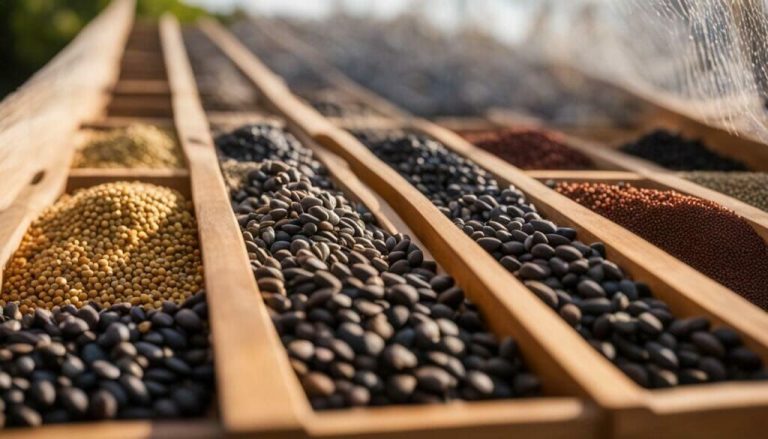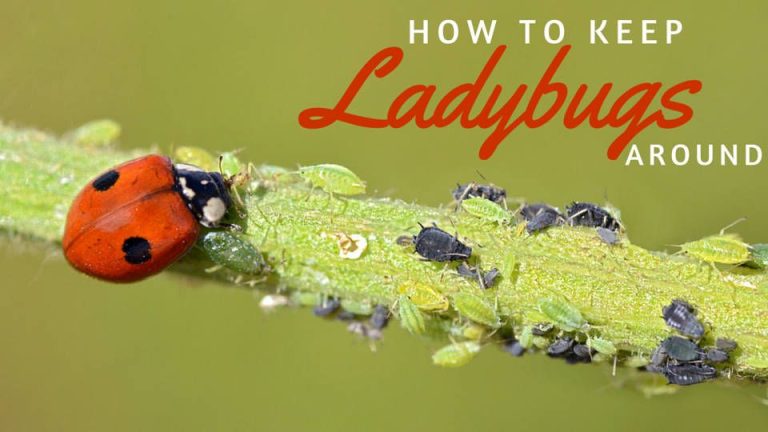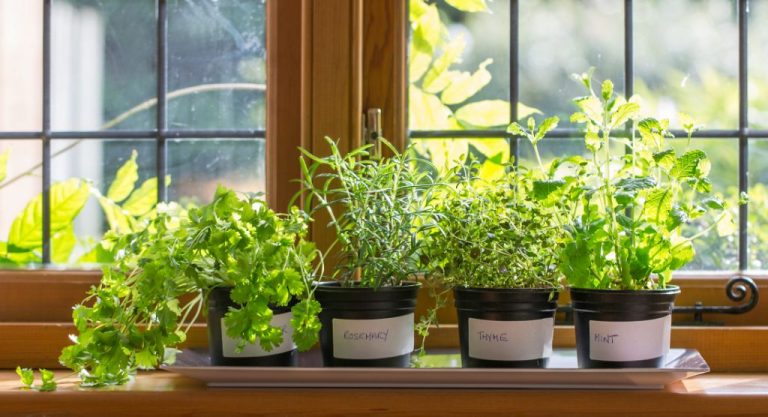Companion Planting In Organic Gardens: Maximizing Plant Health
Companion planting refers to the practice of growing different plants together in close proximity for mutual benefit 1. It is based on the idea that certain plants can help each other grow better when planted next to one another. The origins of companion planting can be traced back thousands of years to Native American practices of inter-planting corn and beans together. Traditional farming systems in places like China, Africa and Mexico have also long made use of the technique.
There are many benefits to companion planting. Certain plants can deter pests, attract beneficial insects, improve flavor, provide support for climbing plants, or help maximize space. By carefully choosing what to plant together, you can boost nutrient uptake, improve soil health, and increase crop yields. Companion planting takes advantage of plants’ natural tendencies and interactions below and above ground. When done correctly, it can be a chemical-free, eco-friendly way to cultivate healthier, more productive gardens.
How Companion Planting Works
Companion planting works by grouping mutually beneficial plants together. Certain plant combinations enhance each other’s growth and deter pests. This synergistic effect is achieved in a few key ways:
Some plants repel or mask the chemical signals of their host plants, disguising them from pests. For example, the strong scent of onions and garlic can confuse insects and protect more vulnerable plants nearby (source).
Other plants attract beneficial insects that prey on pests. By interplanting flowers among vegetables, predators like ladybugs and lacewings are drawn in to feed on aphids and other garden pests (source).
Certain plants release chemicals from their roots that suppress weeds or stimulate growth in their companions. This allelopathic effect can reduce competition and maximize yields in a small space.
With mindful plant combinations, gardeners can harness these symbiotic plant relationships for natural pest control, improved pollination, and higher yields.
Companion Planting for Pest Control
One of the key benefits of companion planting is leveraging plants to naturally deter pests in your garden. There are a few main ways to use companion planting for pest control:
- Repel pests – Certain plants release odors that deter or repel common garden pests like aphids, beetles, flies, and mites. Basil, for example, can be planted near tomatoes and asparagus to repel pests (https://www.agardenforthehouse.com/companion-plants-for-pest-control/).
- Trap crops – Some plants attract pests away from your main crops. Nasturtiums, for instance, lure aphids and beetles away from other plants.
- Attract beneficials – Allowing cover crops and flowers to bloom will attract predatory and parasitic insects that feed on pests. Dill, fennel, and parsley attract wasps, ladybugs, hover flies and other beneficial insects (https://journeywithjill.net/gardening/2019/02/26/companion-planting-pest-control/).
When planning your garden, be strategic about positioning pest-repelling plants near crops susceptible to those pests. And make sure to leave room for plants that will attract the “good bugs” to keep pest populations in check naturally.
Companion Planting for Increased Yields
Companion planting can significantly increase crop yields in an organic garden by pairing plants that benefit each other. There are a few key mechanisms that lead to higher yields:
Certain plants, like beans and peas, are nitrogen-fixing plants. This means they take nitrogen from the air and convert it into a form that plants can use. By interplanting nitrogen-fixers with crops that need a lot of nitrogen like corn and squash, the yields of those crops can be boosted. According to https://ourhappyhive.com/companion-planting-2/, increased nitrogen availability is one of the main reasons companion planting boosts crop yields.
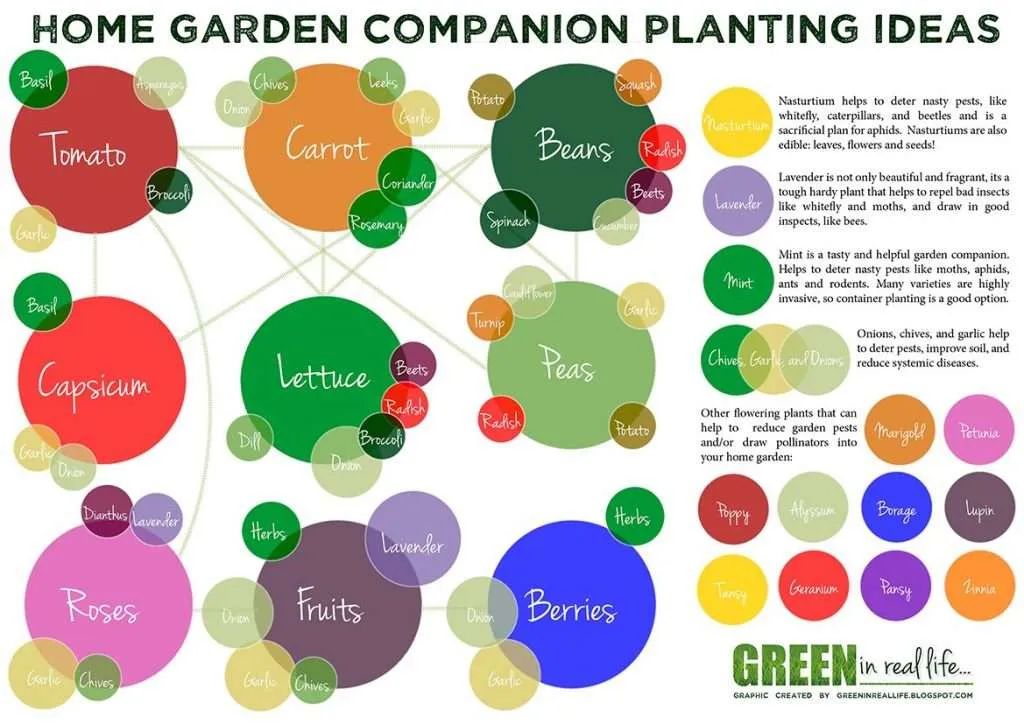
Other plants known as nutrient accumulators gather certain nutrients from the soil and make them more available to neighboring plants. For example, dynamic accumulators like comfrey and yarrow mine the subsoil for potassium, phosphorus and other nutrients and bring them to the surface. Planting these throughout the garden and allowing them to decompose on site helps increase nutrients for crops.
Finally, yields can be increased by fully utilizing vertical growing space. Vining crops like pole beans can be trellised alongside taller crops like corn and sunflowers. Lower growing herbs and greens can be planted around the base of larger plants. Using companion planting allows for intensive planting within the same footprint, resulting in higher total yields per square foot.
Companion Planting for Pollination
Attracting pollinators like bees, butterflies, and hummingbirds to your vegetable garden can help increase pollination and yields. Certain flowering plants make excellent companion plants for vegetables, providing nectar and pollen that draws in pollinators. According to this source, companion planting pollinator-friendly flowers with vegetables is a natural way to help keep the plants healthy and increase yield.
Some great flowering companion plants for attracting pollinators include:
- Lavender
- Cosmos
- Sunflowers
- Marigolds
Planting native flowers that attract regional pollinators is also recommended. For example, in California, planting sages, California poppies, and matilija poppies will draw in native pollinators. Choose flowers that bloom at different times to provide pollen and nectar all season long.
Certain herbs like dill, thyme, oregano and sage also attract pollinators. Interplanting these herbs throughout the vegetable garden gives pollinators small stopping points between vegetable plants.
Companion Planting for Weed Suppression
Certain plants can be used in companion planting to naturally suppress weed growth through a process called allelopathy. Allelopathy refers to the chemical inhibition of one plant by another, where substances released from roots or leaves of specific plants can inhibit the germination, growth, or reproduction of weeds (https://www.mofga.org/resources/weeds/weeds-as-companion-plants/). Some plants known for their allelopathic properties include rye, buckwheat, sunflowers, and goldenrods. Intercropping these plants with crops can create a weed-suppressing effect.
Using living mulches is another organic technique for weed control through companion planting. Low-growing plants like clover or alfalfa can be planted between rows of vegetables or around the base of fruit trees. As the living mulch fills in, it blocks light and crowds out space for weeds to establish (https://bioweed.com.au/companion-planting-for-weed-control/). The living mulch may need to be mowed periodically to prevent overgrowth.
Dense planting can also suppress weeds by filling space and resources in the garden. When vegetable and flowering plants are spaced close together, there are fewer opportunities for weeds to take hold. However, care must be taken not to overcrowd plants and hinder growth.
Common Companion Planting Combinations
There are certain classic companion planting combinations that have been proven to help plants thrive. Here are some of the most effective combinations for an organic vegetable garden:
Tomatoes & Basil
Planting basil next to tomatoes is a classic companion pairing. Basil repels some common tomato pests like aphids, mites, and hornworms (source: https://www.almanac.com/companion-planting-guide-vegetables). The basil’s scent confuses these insects and prevents them from destroying the tomatoes. Additionally, basil may help enhance the growth and flavor of the tomatoes.
Carrots & Lettuce
Lettuce provides shade for carrot plants, protecting them from the hot sun. The lettuce benefits from the loose soil created by the carrots. Together these plants maximize the space and help one another thrive (source: https://www.gardenersworld.com/plants/companion-planting-combinations/).
Beans & Corn
Corn stalks give pole beans a natural trellis to climb up. Meanwhile, beans provide nitrogen to enrich the soil that benefits corn growth. Bean plants also deter corn pests like corn earworm. This is a classic Native American companion planting pairing known as the “Three Sisters.”
Companion Planting Charts
Companion planting charts are useful guides that show which plants make good companions in the garden. They indicate beneficial relationships between different vegetables, herbs, and flowers. Companion planting charts come in many forms, but most are simple grids listing plants on one axis and their compatible companions on the other.
For vegetable gardens, companion planting charts highlight combinations that improve growth, deter pests, increase pollination, and more. For example, pairing beans and potatoes often boosts yields for both crops. Planting onions and carrots together can help deter pests like carrot flies. And interplanting flowers like calendula in the veggie garden draws in pollinators. Herb companion charts focus on which culinary herbs grow well together. Some classic pairings include basil and tomatoes, parsley and asparagus, and dill and cabbage.
When using a vegetable or herb companion chart, look up each plant you want to grow and see which companions are recommended in the same row or column. The charts act as a guide but should not be followed too rigidly. Make adjustments based on your local growing conditions and garden layout. Also note that just because two plants are not listed as companions doesn’t necessarily mean they cannot be planted together.
Here are some sample vegetable companion charts to get an idea of how they work:
From Vegetable & Herb Companion Chart
Tips for Successful Companion Planting
Companion planting requires careful planning and ongoing maintenance to be successful. Here are some tips to maximize the benefits of companion planting in your organic garden:
Proper spacing is crucial. Make sure to follow recommended spacing guidelines when interplanting companion species. Crowding plants too closely can cause issues with air circulation and light penetration.
Ongoing maintenance like weeding, watering, and fertilizing is important. Plants have changing needs throughout the seasons, so be attentive and adapt your maintenance accordingly.
Observe interactions carefully over time. Keep notes on which plant pairings thrive and which don’t. Adjust companion combinations in future seasons based on these observations.
Rotate companion crops from season to season. Many pests and diseases can linger in the soil, so rotating companion placements helps interrupt pest life cycles.
Use trellising and caging to promote good air flow as plants mature. Proper airflow helps deter fungal diseases.
Add beneficial insectary plants that attract pollinators and predators of common garden pests. Flowers like calendula, dill, and buckwheat make great insectary plants.
Clean up and dispose of any diseased material right away to avoid spread. Sanitize tools after pruning diseased plants.
Mulch around plants to suppress weeds and retain soil moisture. Be sure mulch does not touch the base of plants.
Group taller plants to provide shelter from wind and sun damage for shorter companions.
Stagger plantings over several weeks to extend harvests. Replant fast-growing companions as others are maturing.
Conclusion
Companion planting can provide numerous benefits for organic gardens, when done thoughtfully and strategically. By pairing plants that deter pests, enhance pollination, improve yields, and crowd out weeds, gardeners can create a thriving ecosystem where plants support each other’s growth.
Some key benefits of companion planting include natural pest control, increased pollination and yields, and weed suppression. By understanding how different plants interact both above and below ground, organic gardeners can maximize the health and productivity of their gardens.
There is still much to learn about ideal plant partnerships. Further reading and research can help uncover new companion planting combinations to try. Observing plant interactions in your own garden is also valuable. Companion planting is an art and science that develops over time through hands-on experience.
With some knowledge of plant relationships along with creativity and observation, organic gardeners can craft symbiotic plant communities and enjoy the many rewards of companion planting.

